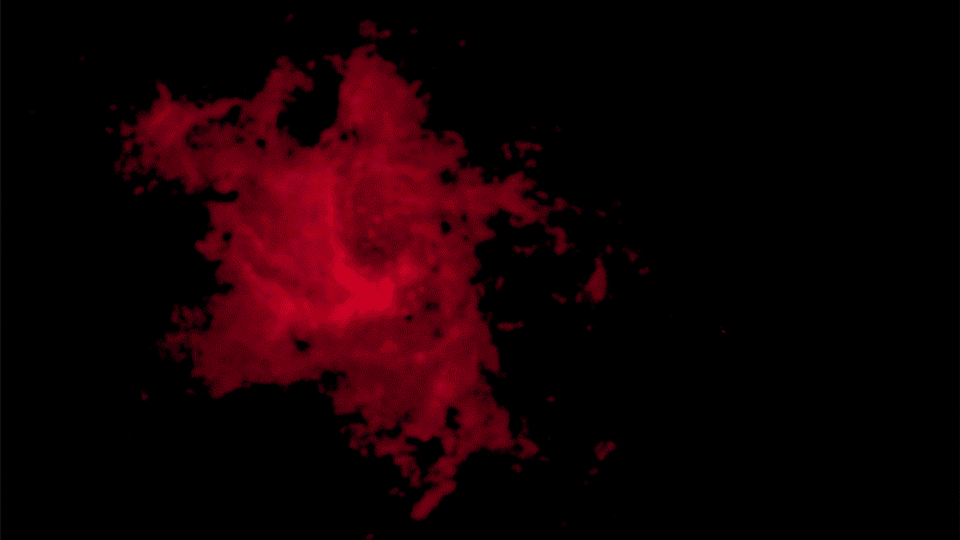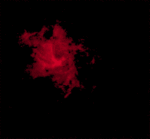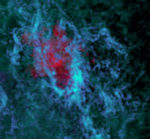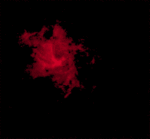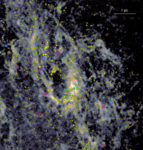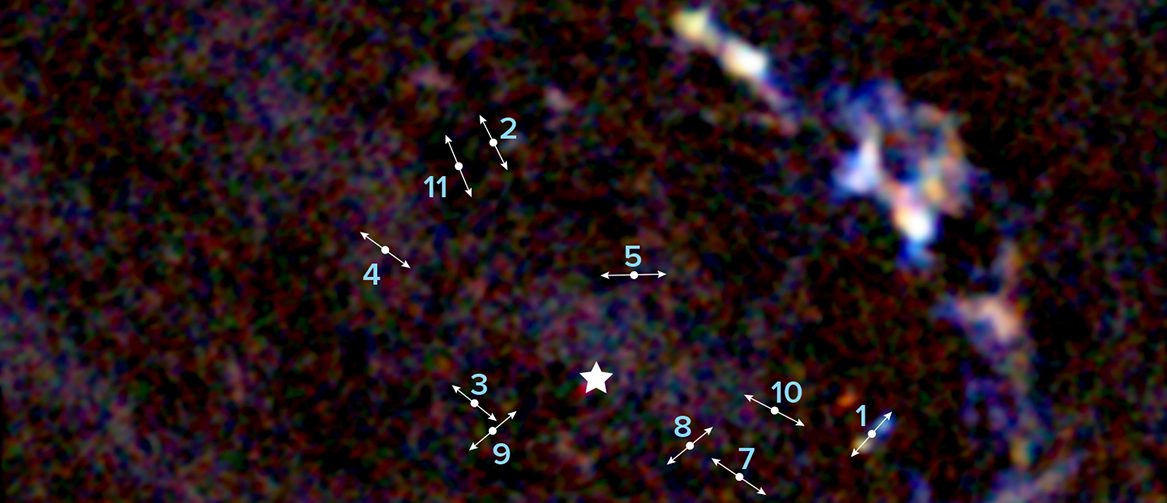Dense Molecular Clouds in the Center of Milky Way are Unable to Form Stars
New observations with the Atacama Large Millimeter/submillimeter Array (ALMA) allowed astronomers to map in exquisite detail the ring of dense molecular gas rotating around the supermassive black hole in Sgr A* at the center of our galaxy. In that ring, also known as a circumnuclear disk, they found thousands of dense gas clumps but, surprisingly, no active star formation: either the tidal stress of the black hole or some other mechanism prevents the clumps from collapsing into new stars.
Every large galaxy has a central supermassive black hole that dominates and is fed by nearby molecular gas. In many galaxies, there are also bright nuclear star clusters. Since molecular gas is the material that supplies black holes and forms stars, the research team wanted to know how much gas is available to form stars and how much is going to feed the supermassive black hole. Sgr A* is the closest supermassive black hole to us. The first challenge of star formation in the vicinity of the Galactic Center is avoiding the high tidal shear that can easily tear apart the nearby molecular clouds, preventing them from accumulating enough mass for fragmentation and core-collapse to proceed.
"The circumnuclear disk can be imagined as a factory of many doughs rotating around the supermassive black hole," explains Pei-Ying Hsieh, principal investigator of this study and fellow astronomer at ALMA. "If the dough is too thin, it will be stretched like spaghetti by the black hole and so feed it; if the dough is dense enough, it has a chance to overcome the tidal shear and become ‘bread’, and so a star."
The astronomers used ALMA to observe the carbon monosulfide molecule lines in the circumnuclear disk to achieve this image. Carbon monosulfide is a dense gas tracer that better samples the circumnuclear disk than carbon monoxide, a commonly used molecule to observe interstellar gas. This method provided a better way to constrain the gas densities and better understand what is going on in it.
The research team found that while a significant amount of gas is available to form stars, there is no clear evidence of star formation. The seemingly unstable clumps of molecular gas should then be marginally stabilized by other forces such as magnetic fields.
“Because the polarized signal generated by the magnetic field from dust emission is weak and difficult to measure, the magnetic field of the circumnuclear disk has not yet been probed at clump-scale (8000 AU),” explains Hsieh. “Thanks to the high resolution and sensitivity of ALMA, we have been granted the ALMA time to mosaic the magnetic field of the circumnuclear disk in future observations with ALMA. We will then continue to explore the role of magnetic fields in star formation in this region.”
The Atacama Large Millimeter/submillimeter Array (ALMA), an international astronomy facility, is a partnership of the European Organisation for Astronomical Research in the Southern Hemisphere (ESO), the U.S. National Science Foundation (NSF) and the National Institutes of Natural Sciences (NINS) of Japan in cooperation with the Republic of Chile. ALMA is funded by ESO on behalf of its Member States, by NSF in cooperation with the National Research Council of Canada (NRC) and the Ministry of Science and Technology (MOST) and by NINS in cooperation with the Academia Sinica (AS) in Taiwan and the Korea Astronomy and Space Science Institute (KASI).
ALMA construction and operations are led by ESO on behalf of its Member States; by the National Radio Astronomy Observatory (NRAO), managed by Associated Universities, Inc. (AUI), on behalf of North America; and by the National Astronomical Observatory of Japan (NAOJ) on behalf of East Asia. The Joint ALMA Observatory (JAO) provides the unified leadership and management of the construction, commissioning and operation of ALMA.
Images
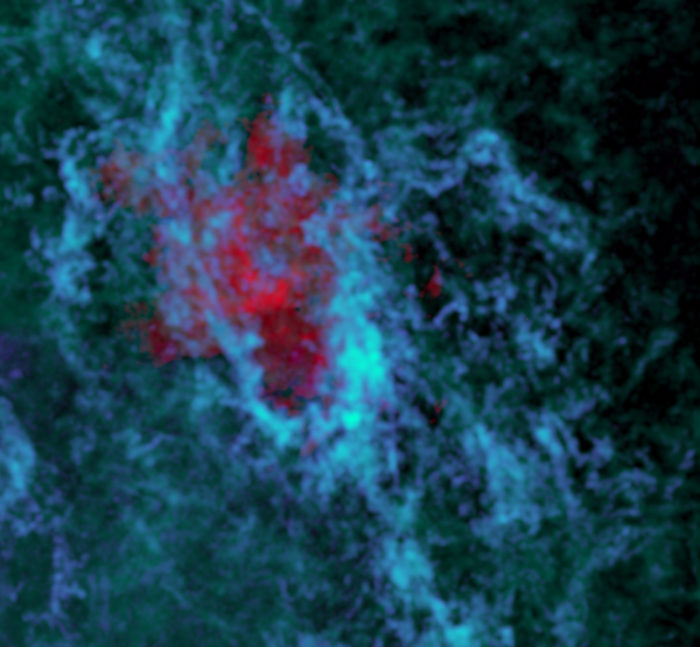
Credit: Dong, H. et al 2011 - ESA/Hubble | Hsieh, P.-Y. et al. - N. Lira - ALMA (EOS/NAOJ/NRAO)
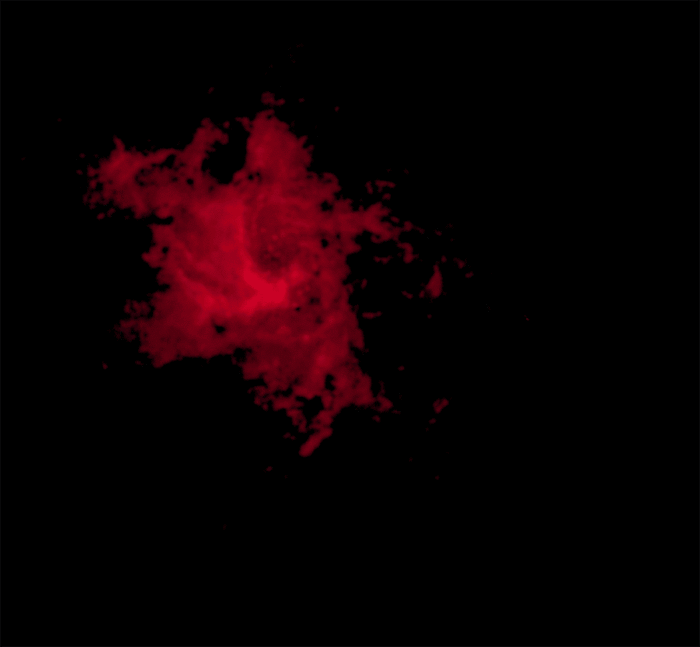
Credit:Dong, H. et al 2011 - ESA/Hubble | Hsieh, P.-Y. et al. - N. Lira - ALMA (EOS/NAOJ/NRAO)
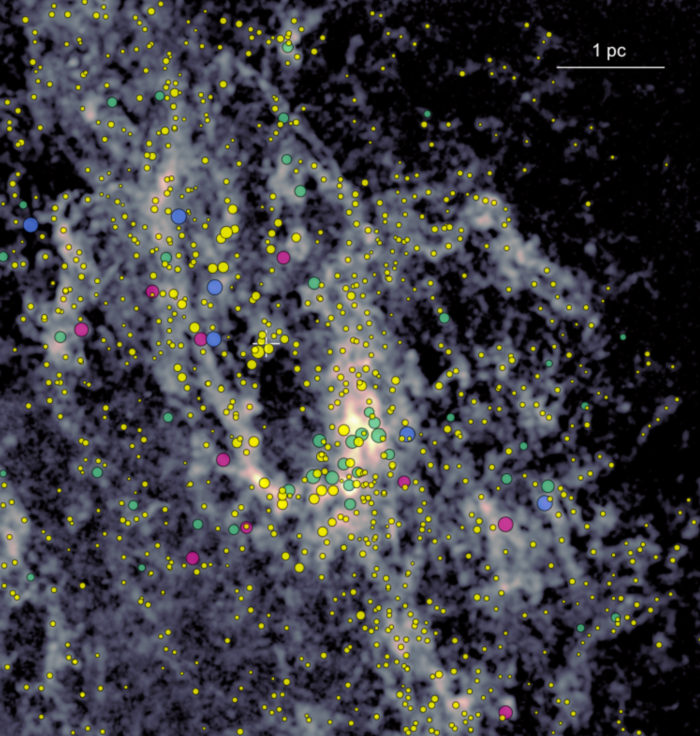
Contacts
-
Nicolás Lira
Education and Public Outreach CoordinatorJoint ALMA Observatory, Santiago - ChilePhone: +56 2 2467 6519Cel: +56 9 9445 7726Email: [email protected]
